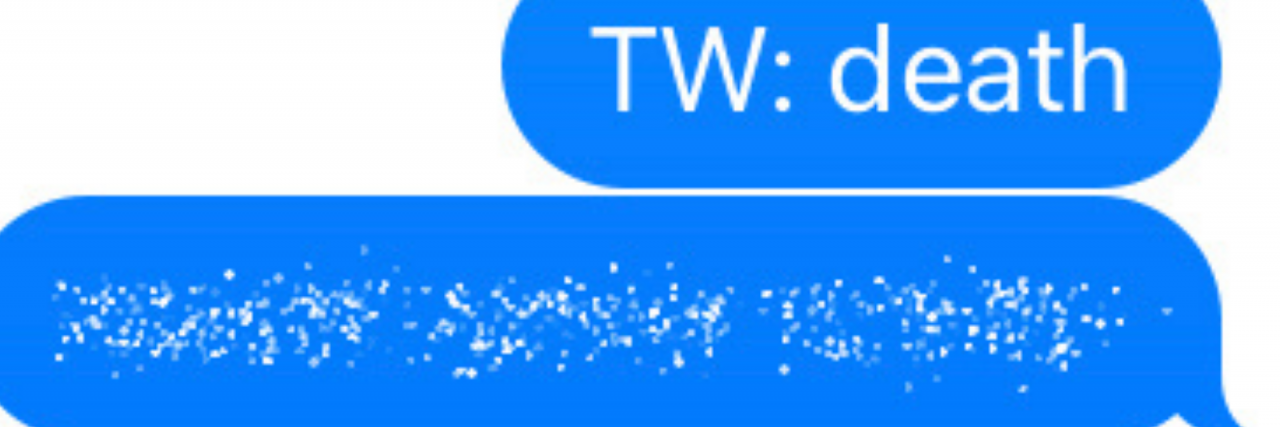3 Texting Tips for When Depression Makes It Hard to Respond to Your Friends
Editor's Note
If you experience suicidal thoughts, the following post could be potentially triggering. You can contact the Crisis Text Line by texting “START” to 741741.
When you live with different mental health conditions, communication can be a bit difficult, to say the least.
At my best, I’ve been able to talk to all my friends and keep them up to date with every little thought that crosses my mind. At my worst, it was the complete opposite.
Friends had to call to make sure I was still breathing. Any absence from social media was met with an inquisitive check-in text. I worried about telling them about my issues because I didn’t want to trigger them. It was a lot in the moment, and now that I’m on the outside looking in and more mentally stable again, I’ve been able to put some thought into some actions I can take in the moment to alleviate some of the stress that comes with being there for a mentally “high risk” friend.
1. Turn your read receipts on.
When I am too depressed and I don’t walk to talk to anyone, the last thing I want to do is answer any single text that comes my way. This would become an issue when the texts were asking “Are you OK?” or even better, “If you don’t hit me up soon I’m driving by your house.”
I turned my read receipts on as a way for my friends to know that I saw their message and I am in fact breathing — I just don’t want to talk.
I call this showing “signs of life.” Any visible social media usage and/or read receipts on any apps or social media devices all count.
As long as they can see that you’re alive, you’re good to go.
2. Send messages using the “invisible ink” effect paired with a trigger warning.
I’ll be honest, I don’t know if Android users have anything like this, but iPhone users do.
The “invisible ink” effect is an effect that hides the content of a message, and the person receiving the message then has to physically engage with the message in order to read its contents.

Here’s why that’s so important:
When we text our friends what we’re really going through, we’re offloading potentially triggering content. While they may opt in because they want to be there for us, that doesn’t mean it wouldn’t still be potentially triggering for them.
Sending a trigger warning, with the following message sent with the effect will allow them to register what the topic is, and also proceed forward when they have the bandwidth. Which, speaking of…
3. Check in before you vent.
This is crucial.
Regardless of how “there” for you someone may be, we all have rough days or trigger topics. Sometimes, we don’t have the capacity or capability in the moment to support people, even when we want to.
“Hey, do you have the energy for me to talk about this topic?”
“This may be a heavy conversation. I wanted to ask if you were up to that before I tell you what’s going on.”
“Hey I want to talk about this thing, but I’m not sure if it’ll be triggering for you. Are you OK with this?”
Most importantly, if they say no it’s not because they don’t love you or they don’t want to be there for you. Just like you’re human, they’re human. Allow them a moment to step away, just like you need for yourself.
Managing life with a mental health condition that causes your behavioral patterns to shift and change can 100% be hard. It’s important to have proper communication with the people around you, so you can help support them support you.
Lead image courtesy of contributor

